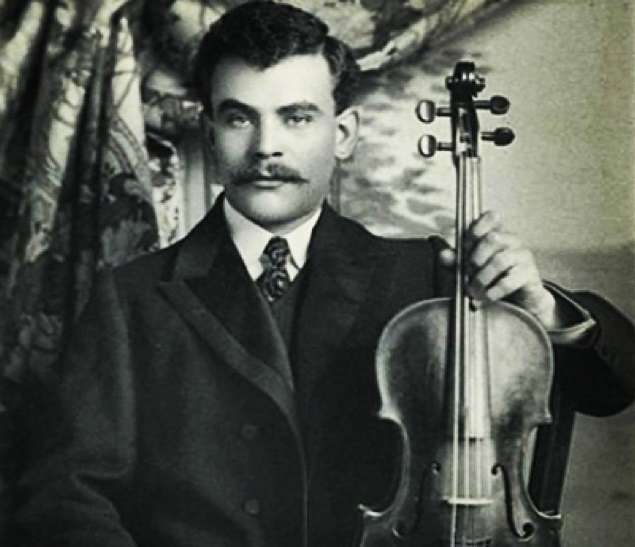Wimbledon is arguably the most famous name in all of South London. Okay, maybe Greenwich or London Bridge run it close. But how many people the world over who know of Greenwich Meantime know that it is named after an actual place in London? Okay, a few. Also, how many people across the world actually know what London Bridge looks like? They, like Fergie, think it’s Tower Bridge. Seriously. Look it up. That song she made called ‘London Bridge’ in 2006? The alternative cover for that single is a photo of her in front of Tower Bridge. In the video she loiters around Tower Bridge as well. Did no one tell her at any point that Tower Bridge is not London Bridge? Anyway, back to Wimbledon. The All England Lawn Tennis & Croquet Club which, for those of who somehow do not know, hosts the most major grass tennis tournament in the world, simply known as ‘Wimbledon’. Beyond knowing there is a tennis tournament in Wimbledon though, many people might not know that Wimbledon has been home to numerous luminaries and big players, most of whom are commemorated by blue plaques.
robert graves - 1 Lauriston road
Novelist + Poet
Lauriston Road was the birthplace and childhood home of one of the most significant British writers of the 20th century, Robert Graves. When Graves was growing up in Wimbledon, it was still part of Surrey, but his description of his hometown as ‘neither town nor country’ reflects its impending absorption into London. Having previously attended the King’s College School in Wimbledon, he attended Charterhouse School and enrolled in the British Army in 1914 soon after leaving, war having broken out not long before. Nearly dying at the Somme, he wrote a memoir of his time in the First World War Goodbye to All That (1929) which is widely regarded of the best of its kind from the period. He would go onto write the hugely successful I, Claudius (1934).
dame margaret rutherford - 4 berkeley place
Actress
A true South London girl, Dame Margaret Rutherford was born in Balham, and having experienced the tragedy of losing both her parents by the age of three, moved to Wimbledon to live with her aunt, living there from 1895 to 1920. She attended Wimbledon High School until she was twelve – the theatre of which is named after her. She would eventually achieve great fame as an actress, playing the titular Miss Marple and Miss Prism in The Importance of Being Earnest (1952), finally winning a best supporting actress Oscar in 1963 for her performance as the Duchess of Brighton in The VIPs.
lord, air chief marshall hugh dowding - 3 st mary's road
Air Force Officer
Hugh Dowding joined the Royal Flying Corps in in 1918 and by 1936 had become commander-in-chief of Fighter Command. He led Britain through the Battle of Britain till November 1940. He is generally credited as the architect for Britain’s victory in the Battle of Britain due to his foresight and thorough, detailed planning. Having been removed from his position in contentious circumstances he moved to Wimbledon in 1941 and would stay there till 1951, during which time he became both a spiritualist and a vegetarian.
arthur schopenhauer - eagle house, high street
Philosopher
Arthur Schopenhauer was a German philosopher whose work was largely concerned with the essential irrationality of the world, and would go onto inform the thought of the likes of Friedrich Nietzsche. Between 1789 and 1805 Eagle House, now hidden behind hoardings, was known as ‘The Rev Mr Lancaster’s Academy’, and for three months in 1803, 15 year-old Schopenhauer lived and studied there. He seems to have struggled during his time in Wimbledon, having formed an instant dislike for the formality of his education, a feeling that would go onto plague him for the rest of his life.
lionel tertis - 42 marryat road
Musician
Lionel Tertis was a British viola soloist of Polish-Jewish descent, and his blue plaque was only unveiled back in 2015. He was one of the first viola players to receive notable individual success, and such was his talent that composers like Gustav Holst and William Walton wrote music specifically for him. He moved to Wimbledon with his wife Lillian, a professional cellist in 1961, by which time he had begun to focus largely on teaching, and by 1963 only gave private performances in his garden. He died at the ripe old age of 98 in Wimbledon in 1975.
georgette heyer - 103 woodside
Novelist
Unveiled by Stephen Fry in 2015, Georgette Heyer is commemorated by a blue plaque for her genre-defining work as a historical-romance writer during the 20th century. She was born in Wimbledon in 1902 and would actually live at several different addresses in Wimbledon during her lifetime, while she also studied at The Study Preparatory in Wimbledon. Most famous for The Grand Sophy (1950) she set her novels Pastel (1929) and Behold, Here’s Poison (1936) in fictionalised versions of Wimbledon. Incredibly popular during her lifetime, Heyer’s popularity has endured to the point where her book sales were still exceeding a million between 2003 and 2010.
Joseph + Arnold Toynbee - Beech Holme, 49 wimbledon parkside
Otologist + Economic Historian
Otologist Joseph Toynbee lived at the rather grand Beech Holme with his son Arnold from 1854 to his death in 1866. Arnold was born in 1852 on Savile Row, and moved with his father to Wimbledon two years later. In 1857 Joseph became an aural surgeon and lecturer at St Mary’s Hospital in Paddington, after which he conducted pioneering work on ear health. Arnold left Wimbledon after his father’s death, and achieved fame and success as the economic historian who coined the term ‘Industrial Revolution’.
josephine butler - 8 North view, wimbledon common
By the time Josephine Butler moved to Wimbledon in 1890 she had already been instrumental in the campaign to repeal the Contagious Diseases Act, which allowed policemen to arrest women suspected of prostitutution in certain ports and towns and then subject them to compulsory checks for venereal diseases. She also campaigned successfully to raise the age of consent from thirteen to sixteen.
sir ernst chain - 9 north view, wimbledon common
Sir Ernst Chain arrived in Britain in 1933 having left Germany for fear of being persecuted by the Nazis for being Jewish. Having accepted a job at Oxford University as a lecturer in 1939, he joined Howard Florey to investigate natural antibacterial agents. They went onto discover the therapeutic action of penicillin, and Chain alone worked out how to isolate and concentrate the germ-killing aspect of penicillin. For their work, Chain, Florey, and Fleming received the Nobel Prize for Medicine in 1945. He moved to Wimbledon in his later years, before moving again to Ireland, where he died in 1979.
john innes - manor house, watery lane
When Innes lived at Manor House, he was known as lord of the manor of Merton. As part of this role he spent much of his time developing Merton Park from lands he had bought in Merton in 1864. In 1890 Innes established on his land the still-standing Rutlish School, later attended by Sir John Major. Upon Innes’ death in 1904, Manor House was converted with funds he left to the John Innes Horticultural Institute, and this moved to Norwich in 1945 where it became the John Innes Centre.
what is the south london club card?
The South London Club is a local discount card to help support small independent businesses across South London whilst saving all who live, work & play in South London money! With over 500+ local discounts to choose from, you will discover & explore all the best hidden gems in South London. Join over 4,000 of us & celebrate all that's independent in South London!






















